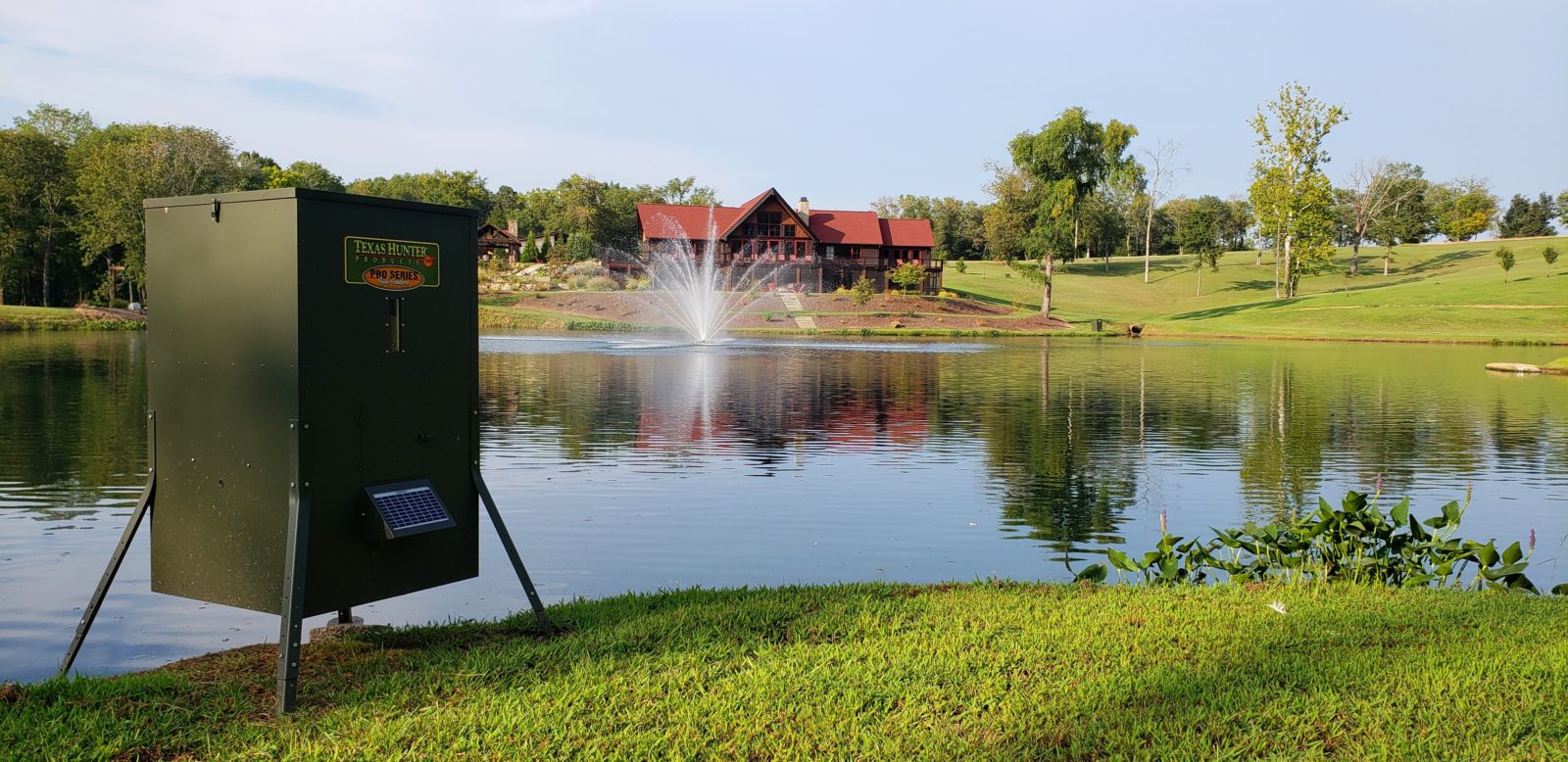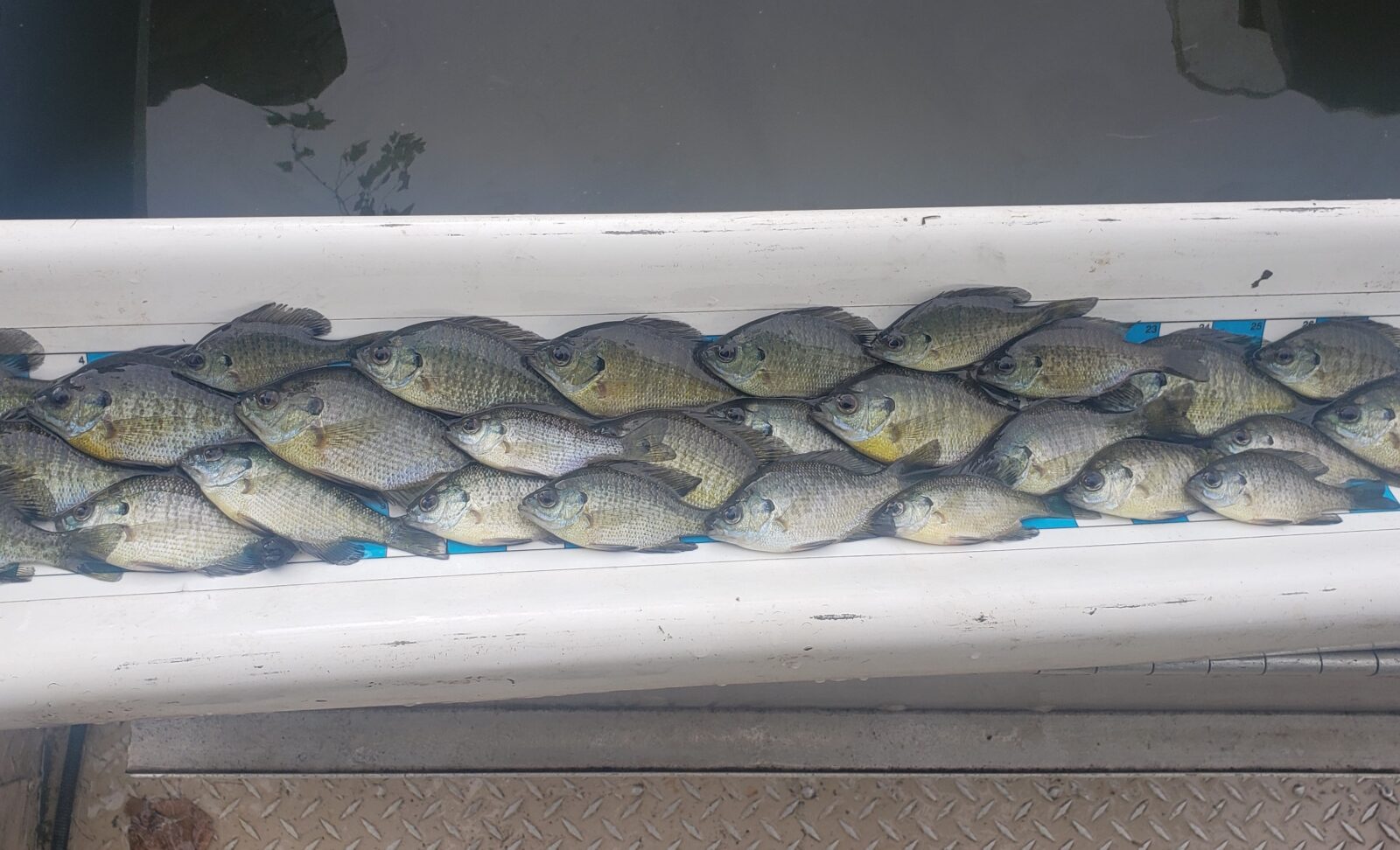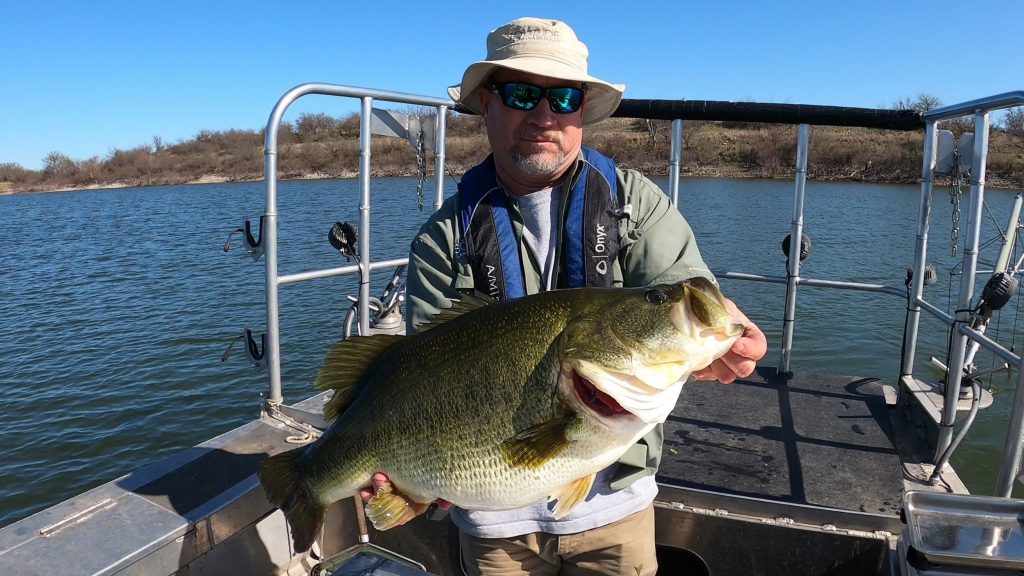
Why Largemouth Bass Are Bigger In the South & How to Grow Bass In the North
AS SEEN PUBLISHED IN POND BOSS MAGAZINE
For decades, people in the great state of Texas have been managing private water to produce double digit Largemouth Bass. Over the past 30 years, this trend has spread across the country and has become somewhat mainstream among affluent landowners and outdoorsmen. As the industry continues to mature, trends continue to emerge. This has helped biologists better understand why bass grow larger in some areas and not others.
Largemouth Bass grow bigger in the south. This makes sense, since the Florida strain of Largemouth Bass have the ability to reach larger sizes, and they only live in the southern regions since cold water is lethal to them. As biologists work to push bass growth, they find themselves asking the question: is advantage due to bass genetics, or are other variables fueling this advantage?
Big Fish Starts with Good Water Quality
To answer this question, it is important to understand that many of the most successful trophy Largemouth Bass fisheries within each state have some basic characteristics in common. Begining with good water quality, they are able to produce a great deal of phytoplankton, which is continually grazed upon by a robust zooplankton population. This fuels both a thriving invertebrate and forage fish population, which is continually being consumed and suppressed by a population of Largemouth Bass. Sounds fairly simple, right?
The Advantages of Growing Fish In The South
So, what advantage does the south have? The answer is simple – warmer water temperature. It turns out that water temperature is the most critical variable that impacts Trophy Largemouth Bass fisheries. Temperature is the primary driver that influences the home range of the superior Florida Largemouth Bass strain. Equally as important, water temperature influences the production of phytoplankton, which leads to the production of forage fish. Simply put, phytoplankton, zooplankton, invertebrates, forage fish, and Largemouth Bass all rely on optimal temperatures to thrive.
For the purposes of this article, the area of the United States where Florida strain Largemouth Bass are able to survive year-round will be referred to as the “Southern Region”.
As indicated above, this Southern Region has far more plankton growing days, which is the rocket fuel that propels the forage fish population further than waterbodies north of them. This extended growing season means more opportunities for forage fish to reproduce, as well as reach larger sizes within a growing season. This all leads to growing more pounds of forage fish using plankton compared to water to the north.
Stock Forage Fish to Fuel Bass Growth
Forage fish are not always thought of in terms of genetics, but that is what it comes down to. Each species of forage has a desired temperature range, as well as lower and upper lethal limits. It just so happens that these southern waters have a genetic advantage with forage species. For example, Threadfin Shad are able to survive the winter. This results in bigger bait the following year for bass to consume. Bigger bait helps grow bigger bass. Likewise, the overwintering of shad allows for more robust recruitment the following spring. Tilapia are another good example. Although they do not overwinter throughout most of this Southern Region, they can be stocked earlier in the year, and they die off later compared to cooler climates. This results in a greater biomass of forage produced within a calender year. The improved performance of forage species provides a big advantage year over year.

On the other hand, maintaining proper sized forage can be a big challenge for areas to the north. Some of these cooler climates have the ability to stock threadfin shad; these shad get off to a later start, resulting in less generations of shad present in a growing season. Rather than reaching large sizes, these shad typically die off due to water temperatures dropping down to lethal levels. As a result, these waterbodies struggle to maintain decent size forage fish. This puts more pressure on other forage species such as Bluegill, which struggle to reach greater than 2.5-3 inches within their first growing season. This all leads to a higher probability of a smaller forage than what is desired by the bass population.
The Benefits of Stocking F1 Largemouth bass
As biologists continue to better understand why the Southern Region produces a greater number of trophy bass, they can better assemble strategies that will succeed elsewhere in the county. This has been going on for many years, but there is still much to be learned and applied.
Stocking F1 Largemouth Bass is one solution that was introduced many years ago to address the inferior bass genetic issue. These F1 bass are created by breeding Florida and Northern strain Largemouth Bass with each other, resulting in offspring that can tolerate colder water temperatures than their Florida strain parent, while reaching larger top-end sizes than their northern strain parent. As with the Florida strain, these F1’s have a lethal cold temperature limit, which restricts how far north they can survive in the winter. Although somewhat subjective, F1s typically do not survive in areas of the country where lakes and ponds ice over regularly each winter.
One downside to the improved genetics that F1s provide, is that the offspring produced by two F1 bass are genetically inferior to their F1 parents. As a result, Trophy fisheries who have F1s present should take additional management steps to offset this challenge. If you live up north where F1s cannot survive, keep in mind that northern strain bass will often top out 30-50 percent smaller than the Florida strain bass if managed properly. F1s, on the other hand, can get much closer to the size of Florida strain bass, although at the end of the day they are inferior.
The Challenges of Northern Fisheries Management
The biggest challenge faced by areas north of this Southern Region is overcoming the headwinds related to productivity. Northern climates warm up slower than southern climates. This means southern waters are producing a dense plankton population while water to the north is still too cold.
Overcoming this challenge sounds daunting, but it is not impossible. To close the gap on the reduced number of phytoplankton growing days, managers must make the most out of each warm growing day they are provided. Getting the bloom out to a slow start in the spring, or letting it fade away too early in the fall are significant oversights. During the growing season, plankton species should contribute to the food chain and they should have an 18-24 inch visibility. Pushing waterbodies with this density of plankton will strain water quality, so proper measures need to be taken.
If northern waters are hoping to grow close to the same biomass of forage fish within a calendar year, they will need to produce this biomass within a shorter period of time as a result of the shorter growing season. The only realistic method available to grow forage faster than with plankton is to supplement with pelleted fish feed. As a result, these waterbodies must feed their forage fish aggressively throughout the entire growing season. When executed properly, this will help tremendously to overcome the productivity headwinds.
As productivity is increased, it is important to understand that proactive water quality management is needed to prevent fish stress as well as a fish kill. Some key parameters to pay attention to are dissolved oxygen, pH, alkalinity, total phosphorus, and total nitrogen. In many cases, it can be an expensive endeavor to monitor and keep these parameters within their desired ranges, but if done successfully, the food-chain will have a significantly better chance of thriving.
When looking at water quality by region throughout the country, the Southern Region has a challenge. Surface water temperatures become hot in the summer. This hot water is good for forage production, but is not as good for growing Largemouth Bass. Unfortunately this issue is not something that can be solved very easily. The best solution to this temperature challenge is to have a decent amount of water between 12 and 20 feet deep, as this deep water provides cooler water temperatures for bass. Maintaining sufficient dissolved oxygen up towards the surface as well as down in this deeper, cooler water is a challenge that would need to be overcome. As a generalization, this Southern Region can struggle to maintain sufficient oxygen levels due to the hot summertime water temperatures.
The Truth About Fisheries Management
It is important to understand that trophy Largemouth Bass are a byproduct of many things going right for many years in a row. Just because you live in the south, it does not mean that you will succeed at growing double digit bass or that your fishery will be better than someone who lives further north. But yes, it is true that the Southern Region has a sizable Largemouth Bass genetic advantage that results in their fisheries truly being superior to those further north. And yes, they naturally have more growing days, produce more plankton, and produce a larger biomass of larger forage fish.
Contact Us to Build Your Trophy Fishery
Call us at 888-480-5253 or complete the form below to connect with an aquatic management expert.
SOLitude Lake Management is a nationwide environmental firm committed to providing sustainable solutions that improve water quality, enhance beauty and preserve natural resources.
SOLitude’s team of aquatic scientists specializes in the development and execution of customized lake, stormwater pond, wetland and fisheries management programs. Services include water quality testing and restoration, algae and aquatic weed control, installation and maintenance of fountains and aeration systems, shoreline erosion control, muck and sediment removal and invasive species management. SOLitude partners with homeowners associations, golf courses, private landowners, businesses and municipalities. SOLitude Lake Management is part of Rentokil, a leading business services company, operating across the United States, Canada and Puerto Rico.
For more information, visit SOLitude Lake Management at solitudelakemanagement.com, and connect on Facebook, LinkedIn and Twitter.



















